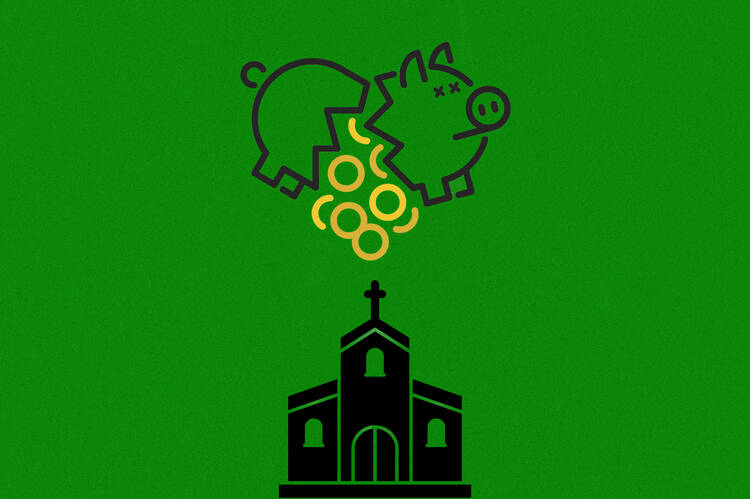Catholic dioceses throughout the United States, including several in New York and California, are considering or already taking steps toward declaring bankruptcy, partly in response to a flood of sexual abuse lawsuits filed after states adopted laws that eliminate or pause statutes of limitations.
Earlier this month, the Diocese of Santa Rosa, Calif., filed for Chapter 11 bankruptcy, and the Dioceses of Oakland, San Diego and Sacramento are considering similar paths. In New York, the Diocese of Albany last month became the fifth of that state’s eight dioceses to seek bankruptcy protection. According to one researcher, 32 Catholic dioceses and religious orders have sought or emerged from bankruptcy since 2001, when the extent of the clergy sexual abuse crisis became more widely known.
The bishops of both Santa Rosa and Albany said the decisions to pursue bankruptcy were driven by an increase in the number of claims, the wish to treat survivors fairly and a desire to maintain the church’s ministry.
“This decision was made necessary due to the overwhelming number of sexual abuse lawsuits filed against the Diocese after the statute of limitations was lifted for a three-year ‘window,’” Santa Rosa Bishop Robert F. Vasa wrote in a letter late last year explaining his decision.
“I understand this filing causes uncertainty, but as a Church and a community of faith, we must recognize that Victim/Survivors are our sons and daughters, and our brothers and sisters, and all of us, without exception, must work together to find ways to help them,” Albany Bishop Edward B. Scharfenberger said in a March 15 letter. “It’s a natural thing for us to do, especially for those who have been hurt by an institution we are all called to be a part of. We must reach out to all and journey with them through the healing process.”
“It’s a natural thing for us to do, especially for those who have been hurt by an institution we are all called to be a part of,” Albany Bishop Edward B. Scharfenberger said.
But lawyers and advocates for survivors say that dioceses seeking bankruptcy protections use the process to shield church assets from individuals who were harmed by the church, by, for example, moving around funds or real estate holdings.
Some bankruptcy experts, however, say the process allows for a thorough process that can ultimately lead to a more just outcome for those who were harmed.
Commenting specifically on Albany’s decision to seek bankruptcy protections, Cynthia LaFave, an attorney at Anderson and Associates, said in a press release: “The Diocese’s role in shrouding—perpetuating—abuse, has always taken agency from survivors. Here again, the Diocese is attempting to silence and suppress the very people they purport to protect.” The firm added that the church has used “bankruptcy protection to avoid transparency and shield assets from survivors who were sexually abused as children by clergy and other agents of Catholic institutions.”
The Survivors Network of those Abused by Priests, meanwhile, called the decision by the Santa Rosa diocese to seek bankruptcy protection an example of a diocese “shielding itself from true accountability and abusing court rules to keep the public and parishioners in the dark about the true scope of clergy abuse in their area.”
In its statement, SNAP said the “proposed bankruptcy strategy would restrict a victim’s ability to obtain compensation and, more importantly, would bar them from obtaining the Bishop’s confidential records which would reveal the scope of previous and present cover-ups.” (SNAP did not respond to an interview request from America.)
But defenders of the bankruptcy process said it gives organizations a fair way to distribute assets to those seeking compensation.
Defenders of the bankruptcy process said it gives organizations a fair way to distribute assets to those seeking compensation.
S. Todd Brown, a law professor at the University at Buffalo who specializes in bankruptcy law, said that the process can help organizations treat creditors, including survivors of abuse, more fairly.
“People tend to think, ‘Oh, no, you know, this company, this church, this diocese…they’re just going to take everything they have and run away and hide.’ That’s not really how it works,” Mr. Brown told America. “What you’re really trying to do is make sure that everyone’s treated fairly, everyone gets a share of the distributions that are available.”
But Mr. Brown, who is not Catholic, acknowledged that the process can be frustrating to survivors.
He said that Chapter 11 bankruptcy is about reorganization and making a plan about how to pay down standing debts. Bankruptcy law is designed to pay out debts backed by collateral before anything else, which locks money up that would otherwise go to survivors.
“There are a whole lot of liens and so forth on diocesan property,” Mr. Brown said. “There may not be a huge pool available for victims. So there are a lot of things that go into it that are going to feel horribly unfair.”
“People tend to think, ‘Oh, no, you know, this company, this church, this diocese…they’re just going to take everything they have and run away and hide.’ That’s not really how it works.”
In the Diocese of Norwich, Conn., for example, plaintiffs criticized a proposed bankruptcy settlement because it did not take the sale of church-owned property into consideration to help fund settlements. Many dioceses seeking bankruptcy protections say Catholic parishes, schools and other entities are not owned by the diocese and argue that they cannot be sold to fund settlements.
Both survivors and the diocese can rack up colossal legal fees during negotiations, a fact that victims’ rights advocates say wears down survivors and prevents prompt settlements.
Mr. Brown, however, pointed out that bankruptcy law is ill-equipped to handle these particular situations, when there is not a clear case of how much money is owed to a creditor, leading to long and often bitter negotiations.
“It’s pretty easy to value what the damages are for breaching a contract,” he said. “[But] these types of claims are just by their nature, insanely difficult to value. What kind of dollar figure do you put on someone being sexually abused?”
According to research published by The Catholic Project, about a dozen U.S. dioceses are currently engaged in bankruptcy proceedings, with at least another 17 having emerged from bankruptcy in recent years.
Some critics of dioceses seeking bankruptcy protection argue that the process allows church leaders to hide assets, especially real estate, that could be used to fund settlements.
Marie Reilly, a professor at Penn State Law who compiled the data cited by The Catholic Project, told America that dioceses seeking bankruptcy seek to weigh the needs of treating survivors fairly while responsibly stewarding resources so that they can continue to carry out their missions.
Without bankruptcy, Ms. Reilly said, it is possible that the people who file lawsuits early might receive larger financial awards than those who file later, as resources are depleted.
Asked about the main benefits for an organization seeking bankruptcy protection, Ms. Reilly said, “the big one is that it’s a permanent solution” for dioceses that are faced with a seemingly endless stream of lawsuits.
That is because creditors, which in the case of sex abuse includes those who might file claims against a diocese, are given a limited window in which they can be included in the bankruptcy proceedings. Separate lawsuits would no longer be possible, which can frustrate survivors and their attorneys. But Ms. Reilly said that bankruptcy can be more equitable, as “all similarly situated creditors are treated similarly.”
Some critics of dioceses seeking bankruptcy protection argue that the process allows church leaders to hide assets, especially real estate, that could be used to fund settlements.
California enacted a similar law in 2020, opening a three-year window that led to more than 2,000 lawsuits against Catholic-affiliated and other organizations.
But Ms. Reilly said that when an organization seeks bankruptcy, “the debtor relinquishes unilateral control over all of its property.” That means it can be more difficult to hide assets, as both a judge and creditors will see what belongs to the organization.
Both Ms. Reilly and Mr. Brown said that when a diocese seeks bankruptcy protections, it does not mean that it forsakes its pastoral obligations to survivors who seek assistance in healing.
“There’s nothing inconsistent with a Catholic organization’s pastoral mission, Gospel mission, if it behaves in a sophisticated and responsible way, as a steward of financial matters,” Ms. Reilly said.
Mr. Brown said bankruptcy is but one part of what can be a lengthy struggle for justice.
“This is a way to deal with some issues that necessarily must be dealt with, so that we can continue what is going to be a very long healing process,” he said.
The number of claims against Catholic dioceses exploded in recent years after changes in some state laws related to statutes of limitations regarding child sexual abuse.
“There’s a lot of money at stake” for both lawyers and survivors, Marie Reilly, a professor at Penn State Law, said.
New York passed a law in 2019 that created a one-year window for survivors of childhood sexual abuse to file claims. A law firm specializing in abuse cases against Catholic organizations said more than 2,800 claims were filed against New York Catholic organizations during that window.
California enacted a similar law in 2020, opening a three-year window that led to more than 2,000 lawsuits against Catholic-affiliated and other organizations. In some instances, the alleged perpetrators had been dead for decades, The Los Angeles Times reported. The 2020 law was the second time the state lifted the statute of limitations, following a similar law adopted in 2002, the first in the nation.
Similar legislation is being considered in Maryland, Washington State and Kansas. Some states, including Vermont and Maine, have abolished statutes of limitations for claims involving childhood sexual abuse.
Ms. Reilly, who is critical of such lookback laws, said she expects that states will continue to consider providing extra time for survivors of abuse to file claims, pointing to “a lot of political momentum to open up claims revival windows.”
“There’s a lot of money at stake” for both lawyers and survivors, she said.








